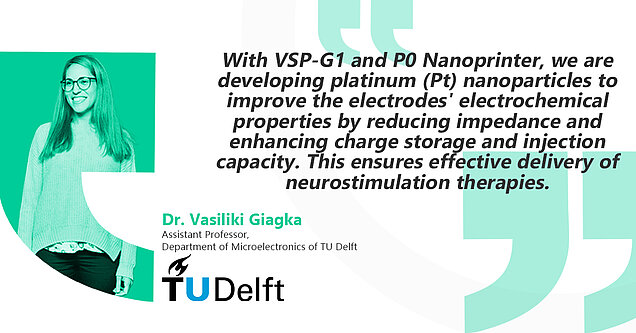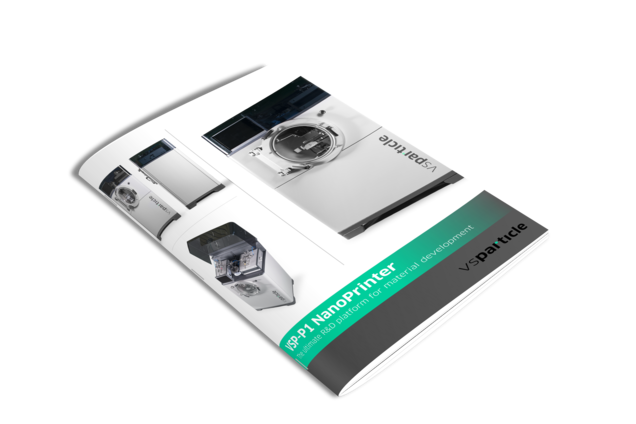Clients:
Dr. Ir. Sten Vollebregt | Associate Professor, Department of Microelectronics of TU Delft
Research Field: Advanced sensor materials, MEMS Technology, Micro/Nano System Integration and Reliability
Dr. Vasiliki Giagka | Assistant Professor, Department of Microelectronics of TU Delft
Research Field: Design and fabrication of active implantable devices; Analog and mixed-signal integrated circuits for biomedical applications
Research tool:
VSP-G1 Nanoparticle Generator and prototype of Nanoprinter (P0)

Could you share insights into the specific research topic you are currently exploring and why it is significant in your field?
We are developing neural interfaces that interact with the nervous system to either record or stimulate neural activity. These interfaces are designed for both implants and in vitro platforms. Our goal is to monitor and manipulate neural activity, which involves changes in the membrane potential of neurons manifesting as electrical signals. By doing so, we aim to treat various conditions through neurostimulation, including autoimmune diseases, diabetes, tremors, Alzheimer’s disease, Parkinson’s disease, and chronic pain.
Neurostimulation is delivered through neural interfaces, which must be optimized for efficient therapy delivery and neural activity recording. The electrodes, which are the points of contact with the tissue, play a crucial role in this process. To enhance the electrochemical properties of these electrodes, we use platinum nanoparticles.
Our neural interfaces feature graphene electrodes supported by transparent substrates, creating fully transparent interfaces that allow interaction with neural tissue both electrically and optically.
Dr. Giagka, could you briefly explain how VSP-G1 Nanoparticle Generator and the prototype of Nanoprinter contributing to your research?
With VSP-G1 Nanoparticle Generator and P0 NanoPrinter, we are developing platinum nanoparticles to improve the electrodes' electrochemical properties by reducing impedance and enhancing charge storage and injection capacity. This ensures effective therapy delivery while maintaining the optical transparency of the electrodes, which is vital for delivering effective neurostimulation therapies.

Dr. Vollebregt, could you describe any challenges or bottlenecks that you may have encountered during your research that VSPARTICLE tools has helped you overcome?
Traditional printing methods involving solvents are often not reproducible, which is a significant challenge. The VSP-G1 and nanoprinter do not require solvents, eliminating the issues of residue affecting the results. This has been a major advantage, allowing us to achieve cleaner and more consistent outcomes.
Could you comment on how VSPARTICLE technologies can drive innovation?
VSPARTICLE's technologies can drive innovation by enabling the creation of cheap, printed sensors that can be integrated onto PCBs, chips, or molded devices. We are exploring the potential of printing platinum lines to create PT100 equivalent sensors at a lower cost and developing humidity sensors and other types. Additionally, using nanoparticles to enhance existing sensors, such as gas sensors, offers new possibilities for flexible and cost-effective sensor development without the need for solvents. This line of research, in collaboration with VSPARTICLE, has the potential to replace existing materials with more efficient alternatives, opening up new avenues in sensor technology.

Nanoparticles at push of a button
VSParticle nanoparticle generators and printers enable researchers and material & device manufacturers to synthesize and deposit nanoporous materials in an easy, clean and efficient way.